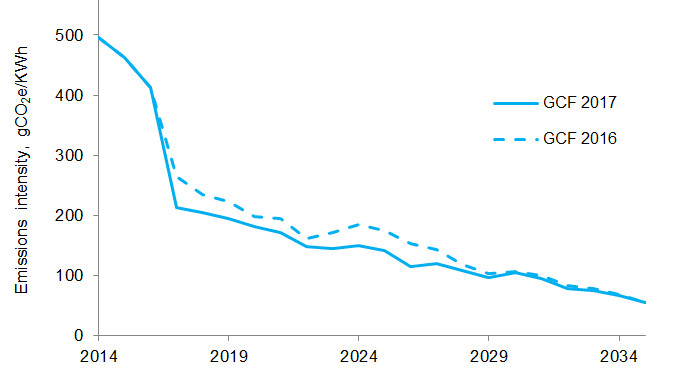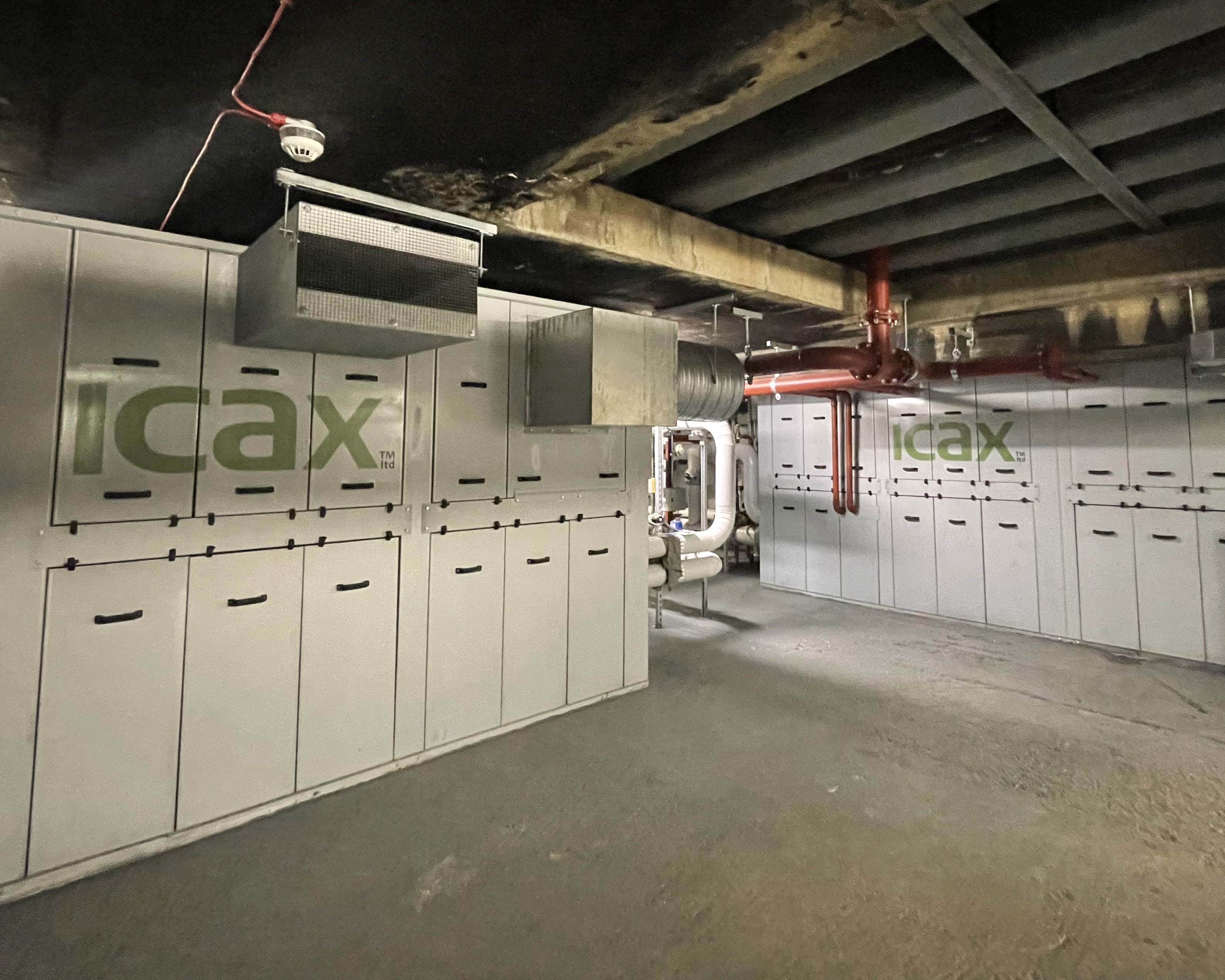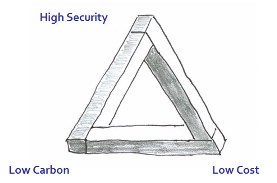Community Heating Southwark – Water Source Heat Pumps
ICAX water source heat pumps have been installed in Southwark community housing estates to provide base load heating in place of the gas boilers which are previously used. The gas boilers have been retained to provide failsafe back up and additional resilience on the coldest days of the winter.

The ICAX heat pumps are designed to provide a high temperature flow to the building so that the existing heat distribution systems did not need to be refurbished. This saved time and avoided disruption so that the retrofit proceeded with minimum disturbance to the people living in the buildings.
These 600kW heat pumps, like all other heat pumps, will emit no carbon dioxide on site. Because heat pumps avoid the need for combustion they will also issue no nitrogen dioxide, nor sulfur dioxide or any other gas or particulate matter in Southwark.
Heat pumps use electricity which may be generated from renewable electricity or from fossil fuel sources. The CO2 released at power stations is sometimes attributed to use of electricity for heating to imply that use of heat pumps is not entirely low carbon heating. However, the electricity generated for the National Grid has a dramatically reduced carbon factor now that coal fired generation is largely phased out and wind generated electricity is making an increased contribution.
The electricity supplied to the heat pumps in Southwark will take advantage of Demand Side Management algorithms to match the use of electricity to times of excess supply where this can be achieved without compromising the heating requirements of the buildings.

The Electrification of Heat
The electrification of heat opens up opportunities not only to balance the national grid, but also to use demand side response techniques at the local level to balance local energy supply and demand.
The heart of the network is the efficient use of renewable energy based on the recycling of heat drawn up from the London aquifer to heat buildings on the community network in winter.
Heat pumps are used to transfer heat to buildings in winter instead of generating heat afresh when needed by burning fossil fuels. ICAX has developed heat pumps which can deliver high temperatures so that they can be used at the heart of the community heating system to deliver heat to buildings on the network.
Balancing the supply and demand for heat through the seasons is mirrored by balancing the supply and demand for electric power by shifting some of the demand from times of peak consumption (by day) to times of excess supply (by night).
The Energy Trilemma

The London Borough of Southwark is accepting the challenge from government to address the Energy Policy Trilemma:
- by using heat networks
- by using heat transfer instead of combustion
- by accelerating the electrification of heat
- and by employing "demand response" to focus on using off-peak electricity and reduce peak electric demand.
Demand Response
Demand side response can be used to shift the timing of electric demand from hours of peak demand to times of surplus supply. DSR requires a bi-directional energy grid to signal when prices are low to trigger additional use (and to signal when prices are high to inhibit use).
Urban Air Quality
Southwark is also addressing the growing problem of air pollution: the water source heat pumps will provide heating without employing combustion or releasing any gasses on site.
Balanced Energy Network
The water source heat pumps installed in Southwark follow on from the successful Balanced Energy Network installed at the London South Bank University. Like the award winning BEN project, the Southwark Housing project:
- is a retrofit installation
- is designed by ICAX
- draws heat from the London Chalk Aquifer
- uses high temperature heat pumps from ICAX
- is in the London Borough of Southwark
See Ground Source Heating See Ground Source Cooling See Ground Source Energy


